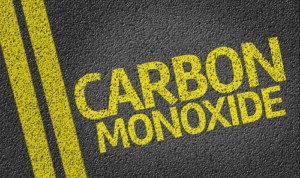Many people are rightfully concerned about the possibility of carbon monoxide poisoning. In the presence of a colorless, odorless gas, you wouldn’t necessarily know right away if you were being exposed to it. Carbon monoxide tricks your body into thinking it is oxygen, gradually lulling you to sleep as the concentration increases. There’s no escaping the fact that carbon monoxide is deadly, so people should be diligent about monitoring its concentration.
With that said, the public has raised concerns about a potential link between an air conditioner and carbon monoxide. Is it possible for your HVAC system to expose you to carbon monoxide? What about your car A/C or window units? We address these questions and ensure that you know the best ways to prevent carbon monoxide poisoning anywhere that you go.
Is There a Connection Between Your Air Conditioner and Carbon Monoxide?
 The short answer is that there is no direct connection between your air conditioner and carbon monoxide under any normal circumstance. The reason for this lack of connection is that carbon monoxide is a byproduct of fossil fuel combustion. Virtually every air conditioner relies on electric power, so there’s no opportunity for these devices to combust fuel and produce carbon monoxide.
The short answer is that there is no direct connection between your air conditioner and carbon monoxide under any normal circumstance. The reason for this lack of connection is that carbon monoxide is a byproduct of fossil fuel combustion. Virtually every air conditioner relies on electric power, so there’s no opportunity for these devices to combust fuel and produce carbon monoxide.
If you’re concerned about chemicals such as freon producing carbon monoxide as a byproduct, that’s another worry that you can put out of your mind. Even if your air conditioner is leaking freon, it is chemically unable to produce carbon monoxide.
If these answers are so straightforward, why is there public concern about this issue at all? The answer is tied to the various other sources of carbon monoxide production that exist around your home, office, and car.
Common Carbon Monoxide Sources
Carbon monoxide is a common byproduct of fossil fuel combustion. Machines that burn fuel are likely to produce carbon monoxide in some concentration. Here are several common sources of this gas.
- Furnaces – Whether they burn oil or natural gas, furnaces take a fuel source and combine it with oxygen and a flame to generate heat. This heat then warms the air and distributes it throughout the building. All furnaces have filters and mechanisms in place that eliminate carbon monoxide exposure, but if these mechanisms fail, then it’s possible for the gas to escape into your building.
- Automobiles – All combustion-based cars and hybrid vehicles burn fossil fuel for energy. This burning process powers the pistons in your car’s engine and sends the gaseous byproducts through the catalytic converter and eventually out the exhaust. This process ensures that harmful gases do not enter the interior of the car. As long as the car is in an open space during this process, there will be no dangerous buildup of chemicals.
- Portable Generators – These generators are designed to function off the grid and usually rely on gasoline to create energy. As with automobiles, generators produce carbon monoxide that is expelled into the atmosphere. If you don’t have proper ventilation, then it’s possible for the gas to collect in areas where it shouldn’t.
Now that you know carbon monoxide’s regular sources, it’s time to address how to mitigate or eliminate the risks associated with this gas.
Avoiding Carbon Monoxide Poisoning
The most important thing to do when dealing with potential carbon monoxide exposure is to maintain your carbon monoxide detector. These detectors are inexpensive, especially compared to the potential hazards associated with exposure. We recommend putting these detectors in common areas of the building so that you know immediately if there is a risk. Once you raise the possibility of detection, you dramatically improve your odds of avoiding harm to yourself and anyone else in your building.
There are several ways to limit the possibility of carbon monoxide accumulation:
- Maintain your machinery. If your generators, cars, and furnaces are well-maintained and functioning properly, then they will not produce excess carbon monoxide.
- Maintain clear airflow with secondary ventilation. This method is particularly critical for cars and portable generators. If you’re running an air conditioner based on a generator, it is essential to keep the generator far from your air intake so that the air conditioner does not incidentally bring the gas into your space. You should never run a car in an enclosed space.
Safely Use Your Air Conditioner, and Carbon Monoxide Will Not Be an Issue
We can safely say that there is no direct connection between your air conditioner and carbon monoxide exposure, so that’s one less thing that you should worry about. With a little preparation and monitoring throughout your building, you can stay safe from exposure to this deadly gas.
We recommend scheduling regular furnace maintenance with a trusted HVAC contractor and practicing responsible operation of all motor vehicles and portable generators. If you aren’t sure of the best places to set carbon monoxide detectors throughout your building, then a contractor can help you. No one ever needs to be a victim of carbon monoxide poisoning, so take the necessary steps to protect yourself and everyone who enters your space.

